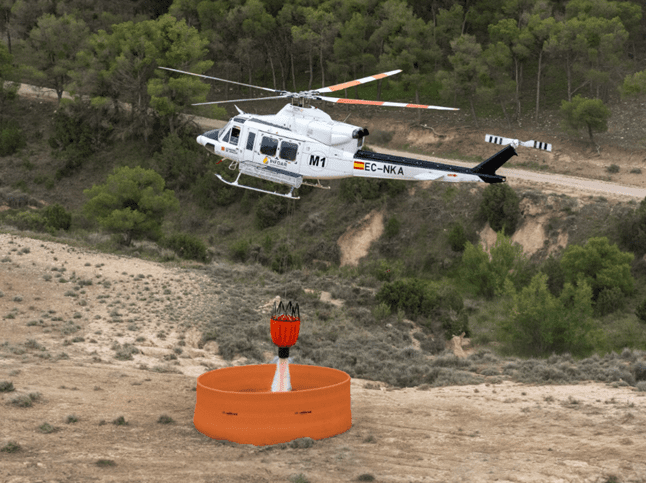Rebecca Spayne, Managing Editor of Fire Buyer speaks exclusively with Tim Houston, Premier of Nova Scotia to analyse the government’s take on the wildfires to hit Nova Scotia in 2023
Our thoughts are with the affected communities in Nova Scotia. Can you provide us with an overview of the wildfires that struck earlier this year?
Certainly. While we’re now moving beyond the heart of the wildfire season, it was an incredibly challenging period for Nova Scotia. Around the end of May to early June, that’s when we were really grappling with these massive wildfires. The scale was certainly unprecedented for us. We had two major fires burning concurrently. One was in an area known as Barrington Lake, which consumed over 23,000 hectares. The other was in Tentalon, quite close to Halifax, our province’s capital, and it spread across nearly a thousand hectares. Over a two-week period, these fires caused immense disruptions, resulting in almost 20,000 people being evacuated from their homes, some for an extended duration. Tragically, numerous structures, particularly in the Tentalon area, were lost. People were simply enjoying their weekend, perhaps in their gardens with their families, when these fires struck and profoundly altered their lives. Typically, while we experience wildfires in Nova Scotia — over a hundred a year, in fact — they’re usually identified and controlled rapidly. However, the unique dry conditions and winds this year exacerbated the situation. These fires have left deep emotional and financial scars across the communities.
To what extent do you believe climate change has intensified the severity and frequency of wildfires, in Nova Scotia and on a global scale?
Absolutely, our climate is changing; there’s no denying that fact. Nova Scotia, with its coastal beauty, has, in just a short time span, been subjected to a series of extreme weather events — from flooding to hurricanes, like Hurricane Fiona, and then these wildfires. And then, more flooding. All these incidents occurring within a single year serve as stark reminders of the changing climate’s repercussions. Nova Scotians, with their deep-rooted connections to fishing, farming, and forestry industries, inherently value and respect the environment. But the current challenges paint a vivid picture of the impacts of our changing climate.
What proactive steps is the Nova Scotia government implementing to mitigate the impacts of climate change?
We’ve been proactive. We’re among the few, if not the only, jurisdictions, at least in Canada or perhaps even North America, to legislate ambitious targets on greenhouse gas reductions. The recent wildfires underscored the necessity for swift government response. Recognising the gravity of the situation, we quickly rolled out financial aid to affected households, supported the Red Cross with matched donations, and initiated relief programmes for local businesses. Our firefighters, both volunteer and professional, received adequate resources and support. In fact, in recognition of their invaluable services, we’ve expanded the presumptive coverage for them against multiple ailments, including various cancers. We’ve also pledged significant financial support for firefighting departments. As a government, our dual approach is to address immediate challenges while also laying out a robust plan for the future.
It’s commendable to see your support not only for the local community but also for the firefighters on the ground. Could you tell us of any new investments?
Absolutely. Across our province, we have roughly 340 volunteer fire departments, alongside first Nations fire departments and ground search and rescue agencies. These are genuine community-driven groups, with individuals stepping forward to serve when their community needs them. We have worked alongside them to determine their needs and how best we can support them. To this end, we’ve executed several rounds of $10,000 grants for each of these roughly 340-350 community groups. Their gratitude is deeply moving. Often, these groups are accustomed to fundraising through community dinners or car washes. So, when the province steps in with a $10,000 grant, it means a lot. One fire department might use these funds for turnout gear, while another might invest in a rescue boat or an off-road vehicle. The goal is to support them in acquiring the equipment they identify as most essential. Seeing their appreciation, recognising their dedication and efforts, has been incredibly fulfilling for us as a government.
Were there specific challenges encountered in evacuating residents from the fire’s path? And how did you ensure the public’s safety?
What stands out to me is the swiftness and efficiency of the evacuations. The fires and the prevailing winds caught many off-guard, with residents being abruptly informed of the need to evacuate. The evacuation was conducted safely, though it was understandably stressful for many. Thankfully, there were no fatalities or serious injuries. While we are still evaluating the process to determine any potential areas of improvement, some have voiced concerns about certain evacuation routes. For instance, some subdivisions might have had just a single exit, prompting discussions about the need for additional routes in the future for safety reasons. I can say with pride that the evacuations were executed swiftly, efficiently, and without any casualties.
Did the strategies employed by Nova Scotia’s firefighters differ for this specific wildfire? Are there new tactics or training being introduced?
Certainly, our wildfire expertise played a pivotal role. We had many incident commanders trained in different regions, who acted promptly. In terms of aerial assistance, while we in Nova Scotia use helicopter water bombers, our neighboring provinces have fixed-wing aircraft support. We received substantial aerial aid from New Brunswick and Newfoundland. Notably, beyond our four helicopter water bombers, eight fixed-wing aircraft from New Brunswick and three from Newfoundland, along with private helicopters, were at our disposal. Over 200 firefighters from regions as diverse as New England in the U.S., Canada’s Department of National Defence, Prince Edward Island, New Brunswick, and Newfoundland, provided assistance.
While our preparation was commendable, we also witnessed a tremendous willingness from others to help. Going forward, we noticed the necessity for resources to have a certain level of fitness and training due to the rigorous demands of combating wildfires. We’re now proactively conducting these fitness tests and offering training to community groups. The goal is to establish a pool of pre-qualified individuals who can be mobilised efficiently. We’re also ensuring mutual aid agreements are solidified to enhance our responsiveness. With our wildland firefighters often helping in other parts of the country, we were fortunate to have an internal pool of expertise to call upon…
To read the full interview, see our last issue here.
Never miss a story… Follow us on:
International Fire Buyer
@Firebuyer
Fire Buyer
Media Contact
Rebecca Spayne Managing Editor, International Fire Buyer
Tel: +44 (0) 1622 823 920
Email: editor@firebuyer.com









